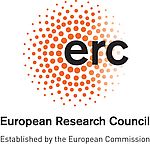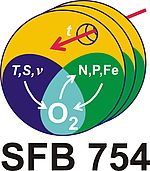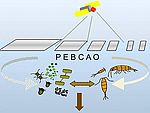The pelagic ocean, which encompasses the water column from the sea-surface to the ocean floor, hosts the largest ecosystem on Earth. The planktonic organisms inhabiting this ecosystem are responsible for about half of global primary production and form the base of the marine food web. They are the main drivers of elemental cycling, the exchange of climate relevant gases between ocean and atmosphere, including the sequestration of atmospheric CO2 in the deep ocean, and for the supply of organic matter to the sediments. Through these processes the pelagic ecosystem generates important feedbacks in the climate system. In turn, changes in environmental conditions due to global change modulate pelagic ecosystems and biogeochemistry, with presently unknown consequences for marine ecosystem health, productivity and global climate.
Reliable prediction of ocean change requires a mechanistic understanding of biological responses to a rapidly changing marine environment. Due to the complexity and non-linear behaviour of marine ecosystems, unravelling those mechanisms is challenging. Experimental perturbation studies simulating on-going and projected environmental changes provide crucial information on biological responses to future ocean conditions. Accompanied by field observations and supported by advanced analytical instrumentation, those studies can provide information and data needed to refine our understanding and assessment of the societal impact of ocean change. A better process understanding is also essential for improving numerical models that can be used for prognostic scenario simulations into the future in order to inform society and policymakers.
Current activities and previous work
- Biogenic calcification
(BIOACID, EPOCA)
- Environmental impacts on the cycling of organic matter by heterotrophic bacteria
(SFB754, PEBCAO, ADAGIO, BIOACID)
- Production and fate of dissolved organic matter (DOM)
(PEBCAO, SOPRAN, SFB754)
- Particle Export Flux and Remineralisation
(SFB 754, Excellence Cluster Future Ocean)
- Microbial dynamics at the air-sea interface and their impact on cycling of climate-active gases
(SOPRAN, SOLAS, Excellence Cluster Future Ocean, SCOR working group 141)
- Mesoscale Eddies: The “Weather” of the Ocean
(REEBUS)
- The changing Arctic Ocean
(μARC, PEBCAO, MOSAIC)
- Fluxes and Fate of Microplastics in Northern European Waters (FACTS) in joint research project JPI Ocean
(FACTS)
- Climate Change and Future Marine Ecosystem Services and Biodiversity
(FutureMARES, AQUACOSM)
- Relationship between upwelling intensity and phytoplankton community composition and productivity in the Humboldt Current Upwelling System
(CUSCO, AQUACOSM)
- Ocean-based carbon dioxide removal strategies (CDRs)
(Ocean-CDR, AQUACOSM)
- Plankton imaging technologies
(Excellence Cluster Future Ocean, GEOMAR Postdoc Research Group)
- Biogeochemical and ecological tipping points in the Humboldt Upwelling System
(Humboldt tipping, CUSCO)
- Ocean artificial upwelling
(ERC Advanced Grant Ocean artUp)








